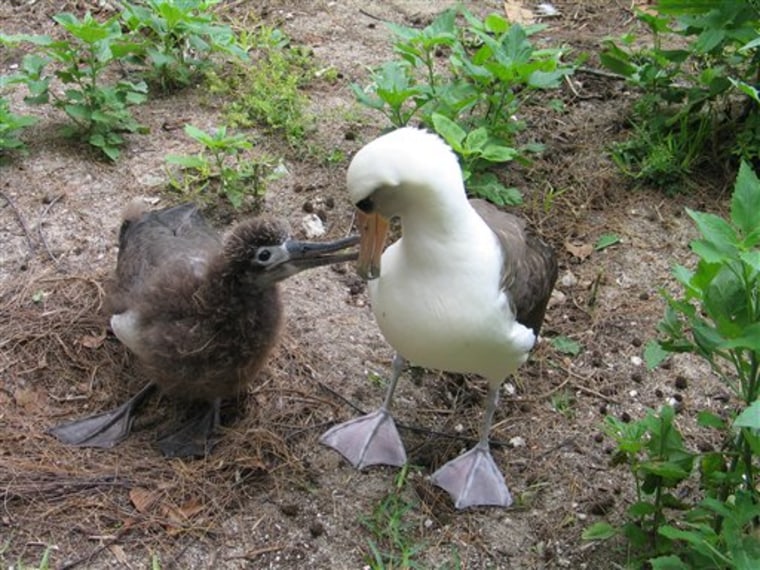A pack of 10 gooney bird chicks, still fuzzy and flightless, recently flew into Kauai — on a chartered plane. It was the first step of a project where Japanese researchers will raise the wild birds and thus get a leg up on saving their country's own endangered golden gooney.
The nests of nearly 500,000 gooney birds, also known as Laysan albatross, blanket the Midway Atoll National Wildlife Refuge about 1,000 miles northwest of Kauai.
Japanese researchers hope that through learning how to nurture the month-old chicks of the relatively numerous Laysan albatross they will better understand how to bring Japan's short-tailed albatross, or golden gooney, back from the edge of extinction.
"This unique pilot project allow us to share our previous knowledge and experience with our Japanese counterparts across the Pacific while also expanding that knowledge and experience through cooperative efforts to recover this endangered seabird," said Barry Stieglitz, project leader for the Hawaiian and Pacific Islands National Wildlife Refuge Complex.
Killed for feathers
Though once among the most abundant species of albatross in the North Pacific, millions of short-tailed albatrosses were killed for their feathers at the end of the 20th century. Those hunts caused a sharp decline in the bird's numbers by the middle of the century, with fewer than 2,000 birds believed to be alive today.
The birds now live primarily at two remote sites in the western Pacific Ocean. But researchers in Japan are looking to establish new colonies of the birds at safer locations.
About 85 percent breed on Torishima Island. That island, however, is an active volcano. And the natural colony of the species is located on a spot vulnerable to mudslides and erosion. An artificial colony has also been set up at a less dangerous spot on the island.
Southwest of Torishima, another breeding site is located in the Senkaku Islands. Those islands, however, are subject to oil exploration and are a disputed territory also claimed by China, which refers the islands as the Diaoyu.
First flight in a few months
On Kauai, the Laysan albatross chicks will be raised in a section of the Kilauea Point National Wildlife Refuge closed to the public.
"It is a beautiful area for albatross, on a protected ridge overlooking the ocean with tradewinds needed for their first flight in a few months," said Brenda Zaun, a biologist with the refuge.
Japanese researchers will be feeding and rearing the chicks as well as collecting data on them during the study, which is expected to last until the chicks begin their first flights in July.
